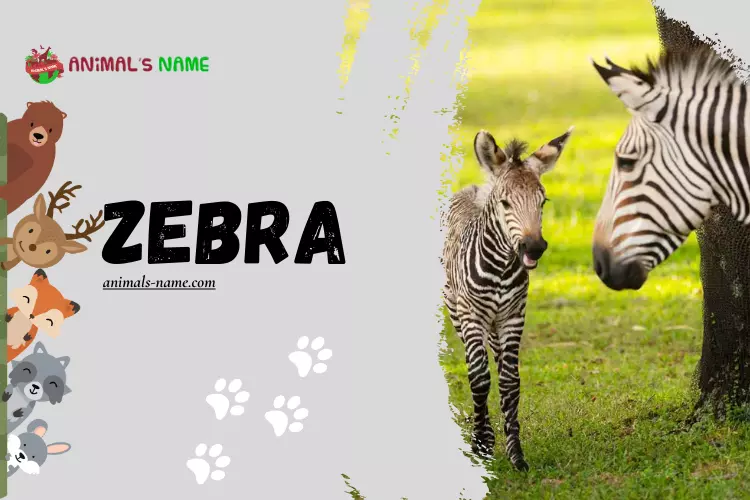Welcome to our blog post about the incredible animal called the zebra! Zebras are fascinating creatures famous for their distinctive black and white stripes. This blog post will explore these fantastic animals’ history, facts, size, habitat, and classification.
Zebras have a rich history that dates back thousands of years. Their ancestors were once found in various parts of Africa, including the southern region. Over time, zebras have become iconic symbols of Africa’s wildlife and are celebrated for their beauty and uniqueness.
Regarding facts about zebras, there are some exciting things to learn. Did you know that zebras can communicate with each other through different types of sounds, such as barks and brays? They also have excellent vision, which helps them spot predators from far away. Moreover, zebras are herbivores which only eat plants and leaves.
In terms of size, adult zebras can grow up to 8.5 feet long and reach a height of around 4.5 feet at the shoulder. Depending on the zebra species, they can weigh anywhere from 500 to 1,000 pounds. These majestic animals can be found in various habitats, including grasslands, savannas, and mountainous regions.
Classified as part of the Equidae family, zebras are closely related to horses and donkeys. However, unlike their domestic relatives, zebras still have a wild nature and are unsuitable to be ridden. They are known for their agility and speed, often reaching up to 40 miles per hour to escape from predators.
We hope you enjoyed this introduction to the world of zebras. Stay tuned for future posts, where we will delve into more fascinating information about these remarkable animals. Be sure also to check out the other animals’ names featured on our blog!
History of Zebra

The history of zebras began long ago in Africa. These beautiful animals have roamed the grasslands and savannas for thousands of years. Zebras are closely related to horses and donkeys but have unique characteristics that make them stand out.
Zebras have a striking black and white striped coat, which is one of their most distinctive features. These stripes serve many purposes. They help zebras blend in with their surroundings, making it difficult for predators to spot them. They also help to confuse predators, as the stripes blend when the zebras are in a group. Scientists believe the stripes may also help repel biting insects, such as mosquitoes.
Throughout history, zebras have played an essential role in African culture. They have been depicted in ancient cave paintings as a symbol of strength and freedom. In some African tribes, zebras are believed to possess magical powers and are revered as sacred animals.
Today, zebras can be found in various parts of Africa, from the Serengeti in Tanzania to the Okavango Delta in Botswana. However, zebras face numerous threats, such as habitat loss and poaching. Conservation efforts are being made to protect these magnificent creatures and ensure their survival for future generations.
Zebras have a long and fascinating history in Africa. Their black and white stripes serve multiple functions, making them unique and easily recognizable. Zebras hold cultural significance and are admired for their beauty and strength. However, their survival is at risk due to human activities, making it vital for us to protect and conserve them.
Importance of Zebra
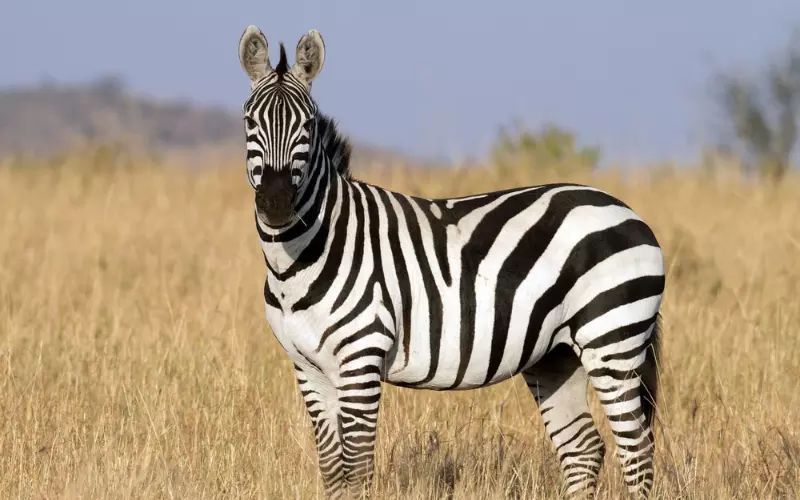
The zebra is a fantastic animal found in Africa. It is known for its striking black and white stripes that cover its whole body. These stripes may seem like a stylish fashion choice, but they play a very important role in the life of a zebra.
Firstly, the stripes of a zebra help to confuse its predators. When a zebra is in a group, the stripes blend and make it difficult for a lion or a cheetah to focus on one zebra. The predators get confused and find it hard to attack. This unique striped pattern acts as a natural camouflage, keeping the zebras safe from harm.
Secondly, the stripes also serve as a way for zebras to recognize each other. Every zebra has a slightly different pattern of stripes, just like our fingerprints. This helps them identify and stay close to their family and friends. They can quickly locate each other in a big group by recognizing their distinctive stripes. This is essential for their survival and social interactions.
The zebra is more than just a beautiful creature with black and white stripes. Its stripes protect from predators and help them stay connected with their herd. These unique patterns make the zebra remarkable and vital to the African ecosystem.
Amazing Facts About Zebra
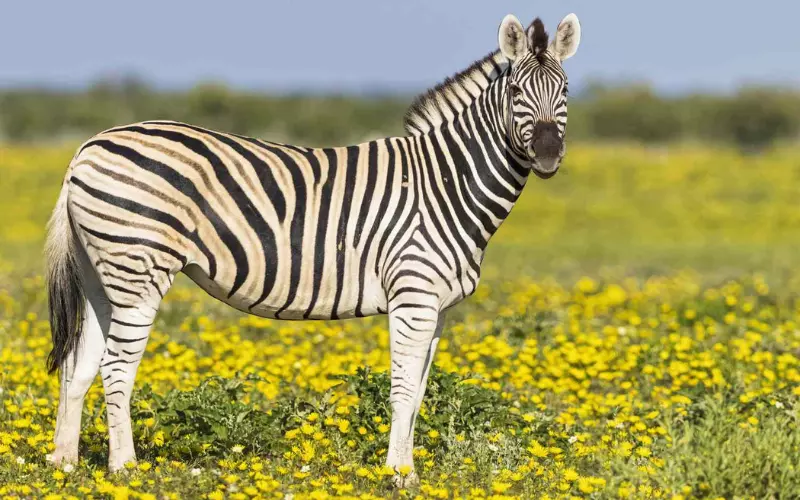
1. Zebras are large, herbivorous mammals native to the grasslands of Africa.
2. There are three main species of zebras: the plains zebra, the mountain zebra, and the Grevy’s zebra.
3. Their most distinctive feature is their black and white striped coat, which helps camouflage them in their natural habitat.
4. Each zebra has a unique pattern of stripes, similar to a human’s fingerprints, making each individual easily identifiable.
5. Zebras use their stripes as a way of confusing and repelling predators, such as lions and hyenas.
6. These social animals live in small groups called herds, consisting of a dominant male, several females, and their offspring.
7. Zebras are known for their excellent sense of hearing and sight, allowing them to detect danger in their environment quickly.
8. They have strong, muscular bodies with long legs that enable them to run up to 40 miles per hour to escape predators.
9. Zebras have adapted to survive in arid environments, as they can go without drinking water by obtaining moisture from the plants they eat.
10. When threatened, zebras kick or bite to defend themselves, using their powerful jaws and hooves as weapons.
11. Zebras are generally wild animals; unlike horses, they cannot be easily domesticated.
12. These mammals are herbivores, mainly feeding on grasses, leaves, and bark. They have grinding teeth to help break down their strict diet.
13. Zebras communicate with each other through vocalizations, body movements, and the positioning of their ears and tails.
14. Female zebras typically give birth to a single foal after a gestation period of about 12 to 13 months.
15. Zebras play a crucial role in their ecosystem as grazers, helping to control grass growth and maintain a healthy environmental balance.
Can we keep a Zebra as our Pet?

For several reasons, keeping a zebra as a pet may not be the best idea. First of all, zebras are wild animals, and they are used to living in vast open spaces. They have a strong instinct for freedom and are not easily domesticated like cats or dogs. It would be unfair and cruel to confine them in a small space, such as a backyard or a house.
In addition, zebras have specific dietary and environmental needs that are difficult to replicate in a home setting. They require much fresh food and access to various plants and grasses to graze on. Providing them with the appropriate nutrition they need to stay healthy and thrive would be challenging and expensive. Moreover, zebras need a lot of space to roam and exercise, which is nearly impossible in a typical household.
Furthermore, zebras are not suited for living near humans. They have strong instincts and can be unpredictable and dangerous. Zebras are naturally designed to live and interact with other zebras in their social groups. Attempting to keep them as pets could result in harmful situations for humans and the zebra, as they are powerful animals that can be difficult to handle and control.
It is not recommended to keep a zebra as a pet due to their wild nature, specific needs, and potential dangers. It is better to admire and appreciate zebras from a distance, in their natural habitats or inappropriate conservation centres where they can be adequately cared for and have the space they need to flourish.
Size of Zebra
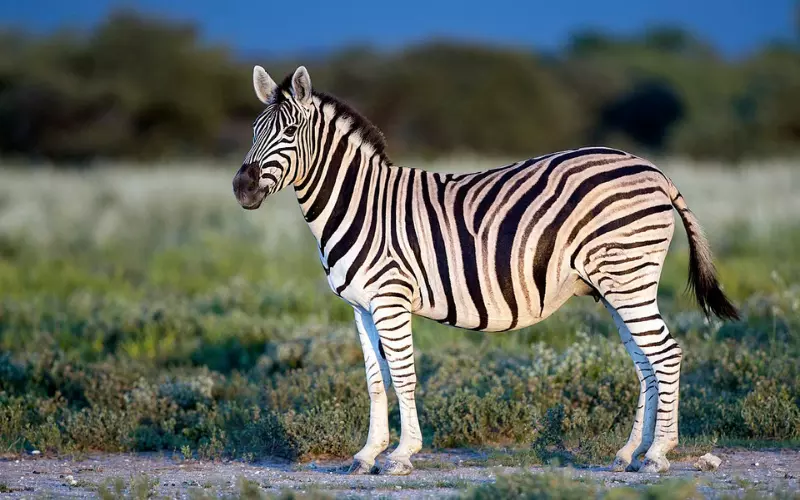
Zebras are amazing animals that can be found in different parts of Africa. They are known for their iconic black and white stripes, making them easily recognizable. When considering their size, zebras are typically around 3.5 to 5 feet tall at the shoulder. To give you an idea, this is about the same height as a dinner table! They also measure around 7.5 to 8.5 feet in length, similar to a small car’s size.
Despite their tall stature, zebras are not exceptionally heavy. On average, a zebra can weigh anywhere from 500 to 700 pounds, similar to a piano’s weight! Their long and lean bodies allow them to move swiftly across the savannah. Zebras have strong legs that help them run fast, reaching up to 40 miles per hour. This allows them to escape from predators like lions easily.
It’s important to note that there are three different species of zebras, each with slightly different sizes. The most common species is the plains zebra, the smallest of the three. The other two species, the mountain zebra and Grevy’s zebra, are a bit larger. But regardless of their size, zebras are magnificent creatures that add beauty to the African landscapes they inhabit.
Habitat of Zebra
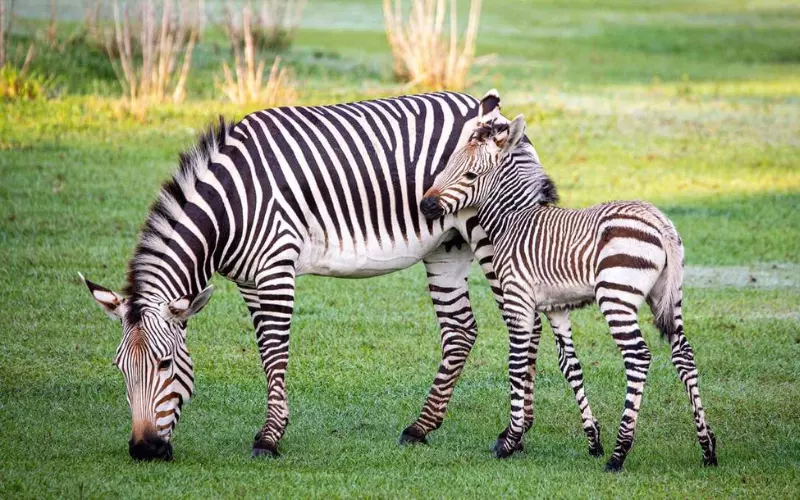
Zebras live in a variety of habitats across Africa. They can be found in grasslands, savannas, woodlands, and mountains. These places provide zebras with all they need to survive.
In the grasslands, zebras enjoy wide open spaces with tall grass. This allows them to see any approaching danger, such as predators like lions or hyenas. Grasslands also offer abundant food for zebras, as they mainly feed on grass and leaves. The temperate climate of the grasslands is also suitable for zebras, as they can endure both hot and cold temperatures.
Savannas, similar to grasslands, have a mix of grass and trees. This habitat is ideal for zebras as it provides food and shelter. The trees offer shade for zebras to rest under during the hot days. Savannas also attract other animals, such as wildebeests and giraffes, which form herds alongside zebras. Living in groups helps zebras protect themselves from predators and find food more efficiently.
Zebras can also be found in woodlands with more trees and less grass. Here, zebras have to browse for food more carefully, as there may not be as much grass available. However, due to the denser vegetation, woodlands offer zebras more protection against predators. The trees also provide shelter and hiding places for zebras if a threat arises.
Overall, zebras are adaptable creatures that can thrive in various habitats. Whether grasslands, savannas, or woodlands, each habitat offers zebras the necessary resources to survive and live harmoniously with their fellow herd members.
Classification of Zebra
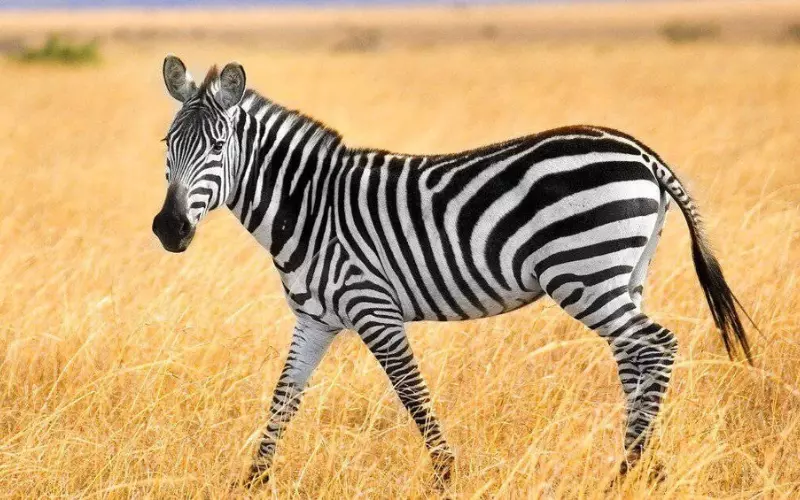
Zebras are fascinating animals that belong to the Equidae family. Within this family, zebras are classified under the genus Equus, horses, and donkeys. There are three main species of zebras: the plains zebra, the Grevy’s zebra, and the mountain zebra. These species have distinct characteristics that help differentiate them from one another.
The most widespread species of zebra is the plains zebra. They are known for their black and white stripes, which are unique to each individual, just like our fingerprints. Plains zebras have a compact and muscular body, with a height ranging from 1.2 to 1.5 meters. They live in large herds and mainly inhabit grassy plains, savannas, and woodlands across Africa.
Another zebra species is the Grevy’s zebra, named after a former President of France who received one as a gift. Grevy’s zebras have thinner stripes compared to plains zebras, and they also have a more donkey-like appearance. They are the tallest zebra species, reaching up to 1.6 meters. Grevy’s zebras are primarily found in Kenya and Ethiopia’s dry, semi-desert areas.
Lastly, the mountain zebra is divided into two subspecies: the Cape mountain zebra and Hartmann’s mountain zebra. They have broader stripes that extend towards the belly and are smaller than the other species, ranging from 1.1 to 1.3 meters in height. Mountain zebras inhabit the mountainous and hilly regions of Namibia, Angola, and South Africa.
Zebras belong to the Equidae family and are classified under the genus Equus. There are three main species of zebras: the plains zebra, the Grevy’s zebra, and the mountain zebra. Each species has unique characteristics and inhabits different regions of Africa. From their distinctive stripes to their habitats, zebras amaze us with their beauty and diversity.
Different Types of Zebra
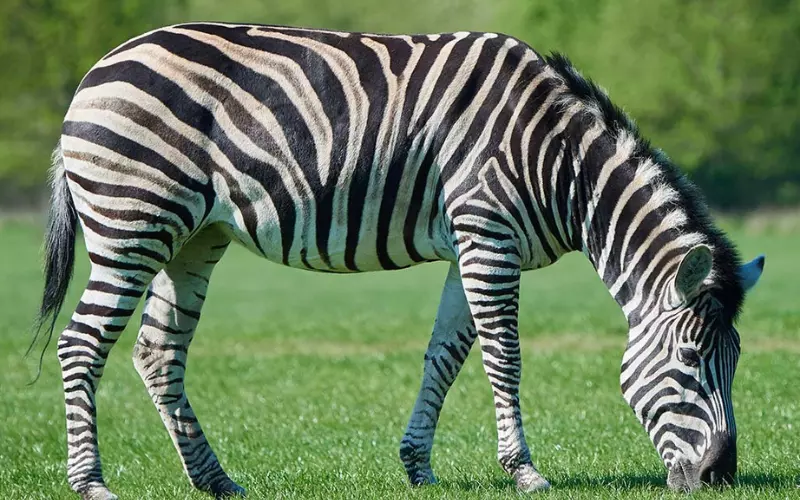
1. Plains Zebra: The most common type of zebra, known for its black and white stripes that form a unique pattern, helping them blend into grasslands. Their keen social behaviours and ability to run fast make them popular animals.
2. Grevy’s Zebra: With narrow, closely spaced stripes, Grevy’s zebras have longer legs than other types. They inhabit dry areas and have a more solitary lifestyle. Sadly, they are endangered due to habitat loss and illegal hunting for their beautiful coats.
3. Mountain Zebra: Adapted to mountainous habitats, these zebras have a stockier build and vertical stripes on their neck and body. They are known for their surefootness and ability to climb steep slopes.
4. Hartmann’s Mountain Zebra: Native to southwestern Africa, they have wider stripes than other mountain zebras and can be recognized by their distinctive belly flap. They depend on regular water sources and have strong family bonds within their herds.
5. Cape Mountain Zebra: Found in South Africa, these zebras have wide stripes on their bodies, which decrease in width on their legs. They are excellent jumpers and can hurdle fences and other obstacles with ease.
6. Burchell’s Zebra: Named after the explorer William John Burchell, they are found in Southern Africa. They have bold, broad stripes all over their bodies and are highly adaptable to different habitats, including grasslands and woodlands.
7. Somali Wild Ass: Although not a zebra, the Somali wild ass is closely related. Their striped legs resemble zebras, and they have adapted to rocky desert environments. However, they are critically endangered due to hunting and habitat loss.
8. Grant’s Zebra: Recognized by well-spaced stripes that continue under their bellies, they inhabit grasslands and open woodlands in East Africa. Grant’s zebras form large herds and undergo extensive migrations to find food and water.
9. Chapman’s Zebra: Native to central and southern Africa, Chapman’s zebras have narrow stripes on their bodies that extend to their bellies. They are social animals and live in herds, featuring complex hierarchies led by dominant males.
10. Crawshay’s Zebra: Named after a British trader, they are found in northern Botswana, Zimbabwe, and western Zambia. Identified by their thin, fine stripes, they are good swimmers and rely on river systems for water sources and protection against predators.
Geographical Presence of Zebra

Zebras can be found in the continent of Africa, specifically in the regions of sub-Saharan Africa. This region includes South Africa, Kenya, Tanzania, and Zimbabwe. They are well-adapted to live in grassland and savannah habitats, with plenty of space to roam and graze on grass.
However, zebras are not found in other parts of the world, such as North America, Europe, or Asia. This is because zebras have evolved to thrive in the unique environment of Africa, where they have access to the necessary resources like water and food. The different species of zebras, such as the plains zebra, mountain zebra, and Grevy’s zebra, each have their specific range within sub-Saharan Africa.
It is important to note that while zebras are native to Africa, they can also be found in zoos and wildlife reserves in other parts of the world. These captive zebras are often cared for by experts who ensure their well-being and attempt to recreate their natural habitat as best as possible. However, their natural range remains limited to Africa, where they play a crucial role in maintaining the ecosystems as herbivorous grazers and as a food source for predators like lions and hyenas.
Diet of Zebra’s
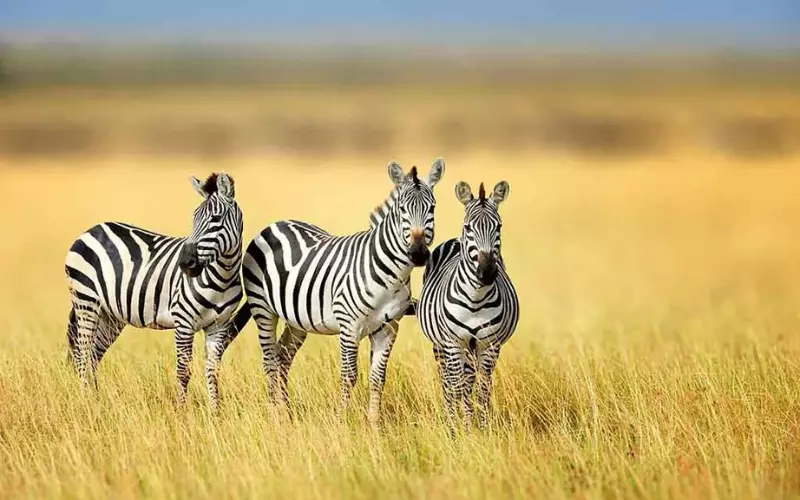
Zebras, those majestic animals native to Africa, have a unique and interesting diet. They are herbivores, which means they eat plants and vegetation, mainly grass. They spend much of their time grazing in open grasslands and savannahs, where they can find plenty of this nutritious food.
The diet of zebras is predominantly composed of tough, coarse grasses. They must munch on a large amount of this vegetation because their digestive system breaks down food quickly. Their teeth are adapted to help them feed on grass, with sharp incisors to bite off the grass and robust molars to grind it up. Zebras also have long and mobile lips, which allow them to selectively choose the best parts of the grass while avoiding any undesirable parts, such as roots or withered sections.
In addition to grass, zebras may also consume leaves, bark, and shrubs when grass is scarce in certain seasons or regions. They have been observed eating fruits and legumes occasionally, which are not a significant part of their diet. Interestingly, zebras are one of the few animals in the animal kingdom that can survive on a diet primarily of grass. This makes them skilled grazers and well-adapted to their natural habitat.
The diet of zebras mainly consists of grass, but they can also eat leaves, bark, and shrubs when necessary. Their teeth and moist lips allow them to feed on the available vegetation efficiently. Their ability to survive on a primarily grass diet highlights their adaptability. It makes them a crucial part of their ecosystem, as they help shape the landscape through their grazing habits.
Locomotion of Zebra’s
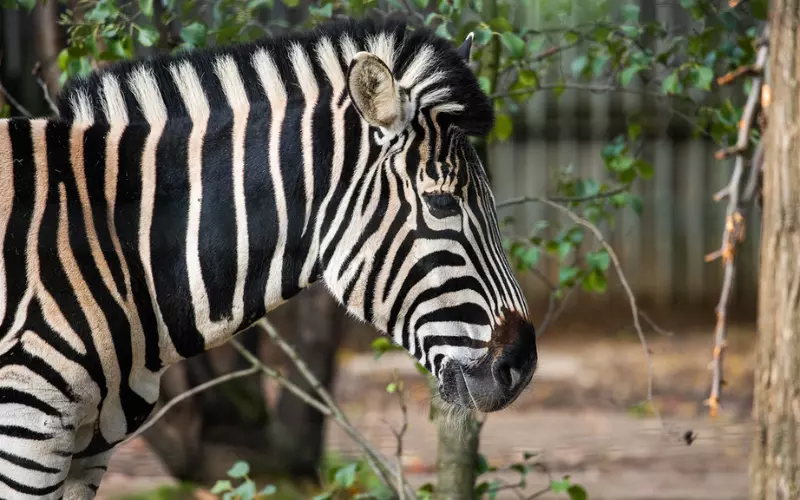
Zebras move in a unique way called locomotion, which means moving from one place to another. They have a fascinating walk, often called a four-beat, because their footsteps follow a rhythm. When a zebra takes a step with its right hind leg, it is followed by the right front leg, the left hind leg, and the left front leg. This unique walk makes it easier for zebras to stay balanced while they’re on the move.
Zebras walk in a straight line while grazing or searching for water. However, if they feel threatened by predators like lions, their locomotion changes fantastically. In that case, Zebras can run incredibly fast, reaching up to 40 miles per hour (64 kilometres per hour). When they sprint, they lift all four legs off the ground simultaneously, giving them momentum and allowing them to move swiftly away from danger. This tremendous speed and unique locomotion technique help zebras to stay safe and survive in their natural habitats.
Social and Sexual Behaviour of Zebra’s
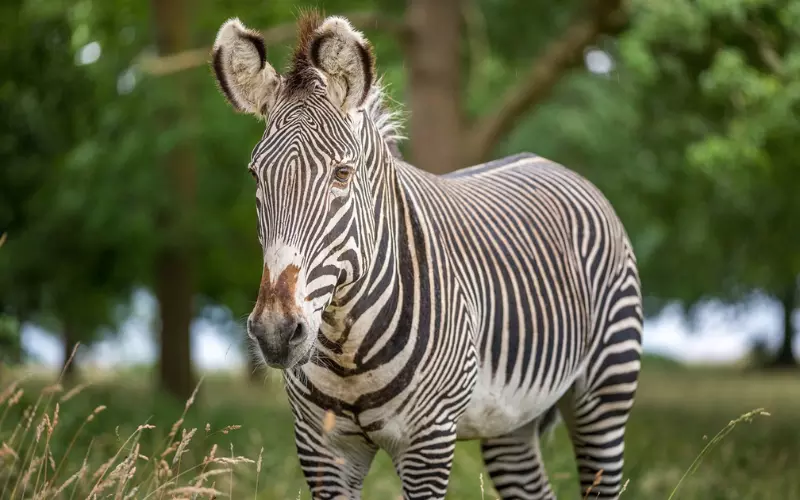
Zebras are fascinating creatures known for their distinctive black and white stripes. They have a unique social structure where they live and travel in herds. These herds usually consist of a dominant male, several females, and their offspring. The dominant male, also known as the stallion, protects the group from predators and ensures the safety of the females and young ones.
The social behaviour of zebras revolves around cooperation and communication. They rely on vocalizations and body language to interact with one another. For example, they use different sounds to communicate danger or to establish dominance within the group. Additionally, grooming is an essential part of their social behaviour. Zebras often engage in mutual grooming, using their teeth to scratch and clean each other’s bodies. This behaviour helps strengthen social bonds and promotes a sense of unity within the herd.
Regarding sexual behaviour, zebras have a mating system called polygyny. This means that one dominant male mates with multiple females in the herd. During mating season, the dominant male will defend his right to mate with the females from other males. He does this by vocalizing, displaying aggressive behaviours, and even fighting if necessary. When a female is ready to mate, she will signal her readiness through body language and allow the dominant male to get closer to her.
Zebras have a fascinating social structure where cooperation and communication play crucial roles. Their unique mating system and behaviours ensure the survival and unity of the herd. From living in herds to grooming and mating, every aspect of their social and sexual behaviour showcases the incredible nature of these striped animals.
Reproduction and Lifecycle of Zebra’s
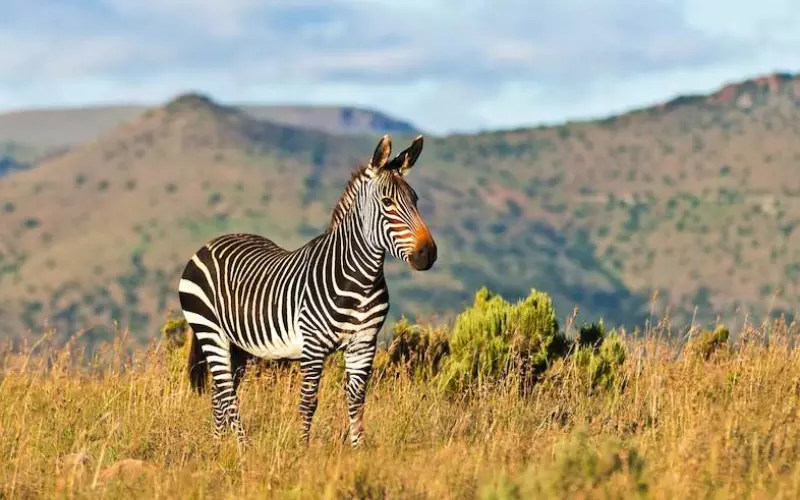
Like all mammals, zebras have a unique way of reproducing and going through different stages in their life cycle. The life cycle of a zebra starts when a male and female zebra come together to mate. The male zebra tries to impress the female with strength and agility. Once the female is attracted to the male, they mate, and the female becomes pregnant.
After a gestation period of about a year, the female zebra gives birth to a single foal. The foal is born with stripes, which will help to camouflage it in the grasslands where zebras live. The mother zebra takes good care of her foal, nursing it and protecting it from danger. The foal proliferates and starts eating grass when it is just a few days old. It stays close to its mother for safety.
As the foal grows, it becomes more independent and joins other young zebras in groups. These groups, called harems, are led by a dominant male zebra called a stallion. The young zebras learn essential skills from the older ones, such as finding food and avoiding predators. They continue to grow and develop until they reach adulthood.
The life cycle of a zebra is fascinating to observe. From the exciting mating ritual to the birth of a foal and its growth into a muscular adult, each stage plays a vital role in ensuring the survival of this magnificent animal. Through their reproductive and social behaviors, zebras demonstrate the importance of family and community in their lives.
Threats to Zebra’s
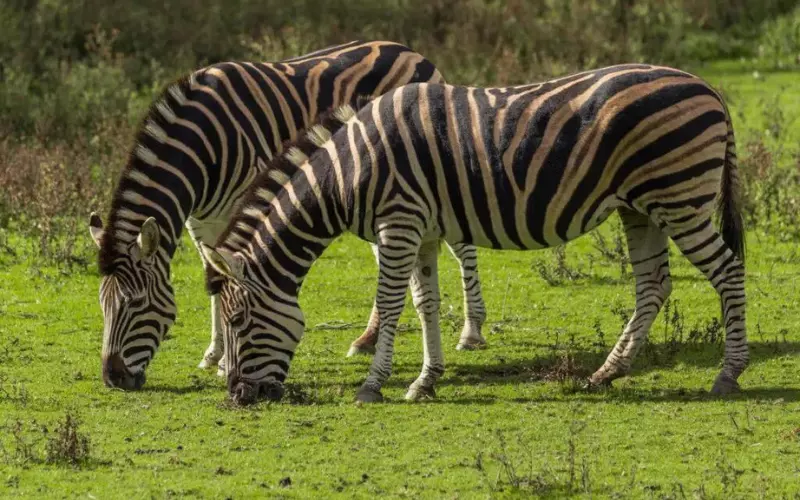
Several threats pose a risk to zebras, unique animals that roam the grasslands of Africa. One major threat is the loss of habitat. As humans continue to develop and expand their activities, the natural habitats of zebras are being destroyed. This means they have less space to roam freely and find food and water. When their habitats are taken away, zebras struggle to survive.
Another threat to zebras is hunting. Some people hunt zebras for their beautiful skins or sport. This harms the zebra population because it reduces the number of zebras in the wild. When too many zebras are killed, their numbers start to decline, putting the species in danger. Hunting also upsets the balance of the ecosystem because zebras play an essential role in the food chain.
Lastly, climate change is becoming a significant threat to zebras. With the changing climate, some areas are experiencing more extreme weather conditions, such as droughts or heavy rains. These weather changes can affect the availability of food and water for zebras, making it harder for them to survive. Climate change also disrupts their natural behaviour and migration patterns, essential for their well-being.
Zebras face various threats that endanger their survival. The loss of their habitat, hunting, and climate change all contribute to the decline in population numbers. Humans must protect zebras and their natural habitats to ensure their survival for future generations.
Conclusion
In the world of animals, the zebra stands out with its unique features and fascinating history. Zebras are beautiful creatures in various parts of Africa, roaming freely in their natural habitat. They are known for their black and white stripes, which make them visually attractive and serve as a form of protection from predators.
Zebras are herbivores, meaning they eat only plants. They have a special digestive system that allows them to process the tough grasses found in their habitat efficiently. These animals are social beings and often gather in large groups called herds. This helps them stay protected from predators and allows them to communicate with each other using various body movements and vocalizations.
In terms of classification, zebras belong to the family Equidae, which also includes horses and donkeys. They are known for their solid and sturdy bodies and ability to run fast when necessary. Zebras can reach a height of about 4 to 5 feet at the shoulder and weigh around 500 to 700 pounds. They have adapted to live in different habitats, from grasslands to woodlands, and are known for their endurance and agility.
Zebras are fascinating animals that have captivated the attention of humans for centuries. From their striking appearance to their unique social behaviour, zebras are truly one of nature’s wonders. We need to appreciate and protect these magnificent creatures as they contribute to the diversity and beauty of our planet. Let us continue to learn more about zebras and other amazing animals as we strive to live in harmony with our fellow inhabitants of this Earth.
FAQ’s
What is a zebra?
A zebra is a wild animal native to Africa that belongs to the horse family and is known for its black and white stripes.
What is the scientific name of a zebra?
The scientific name for the common zebra is Equus quagga.
How many species of zebras are there?
There are three species of zebras: the plains zebra, the mountain zebra, and the Grevy’s zebra.
Where do zebras live?
Zebras are generally found in the grasslands, savannas, and woodlands of Africa.
What do zebras eat?
Zebras are herbivores and primarily feed on grass, leaves, bark, and stems.
How long do zebras live in the wild?
In the wild, zebras can live up to 25 years.
How fast can zebras run?
Zebras can run up to 40 miles per hour (64 kilometres per hour).
Why do zebras have stripes?
The exact reason for zebras having stripes is not known, but it is believed that the stripes help deter biting flies and confuse predators.
Do zebras have any predators?
Yes, zebras have predators such as lions, hyenas, and crocodiles.
Can zebras be domesticated like horses?
No, zebras are known to be wild animals and cannot be easily domesticated.
How do zebras communicate with each other?
Zebras communicate through vocalizations and body language, such as braying, snorting, and using facial expressions.
Do zebras migrate?
Yes, some zebras, particularly the plains zebra, undertake seasonal migrations in search of food and water.
Are zebras endangered?
While the plains zebra and mountain zebra are not considered endangered, the Grevy’s zebra is listed as endangered due to habitat loss and hunting.
Can zebras swim?
Zebras are generally not strong swimmers, but they are capable of crossing rivers and bodies of water when necessary.
Are zebras social animals?
Yes, zebras are highly social animals and typically live in small family groups called harems, consisting of a dominant male, several females, and their offspring.

Hi there! I’m Morgan Gutierrez, and I love animals! I work as a Seasonal Animal Care Specialist at Brookfield Zoo and also teach people about animals, which is super fun. I studied at Valparaiso University in Lockport, Illinois, where I learned even more about these amazing creatures.
I’m not just about taking care of animals; I write articles about them, too! I explore and share many interesting animal stories, from cute kittens to giant elephants.
In the past, I’ve worked with veterinarians, helped with research, and even been an Animal Ambassador, bringing animals closer to people. Animals are my passion, and I enjoy helping others learn about them. So, if you ever want to know about animals, feel free to ask. I’ll explain it in a way that’s easy to understand, just like talking to a friend!

